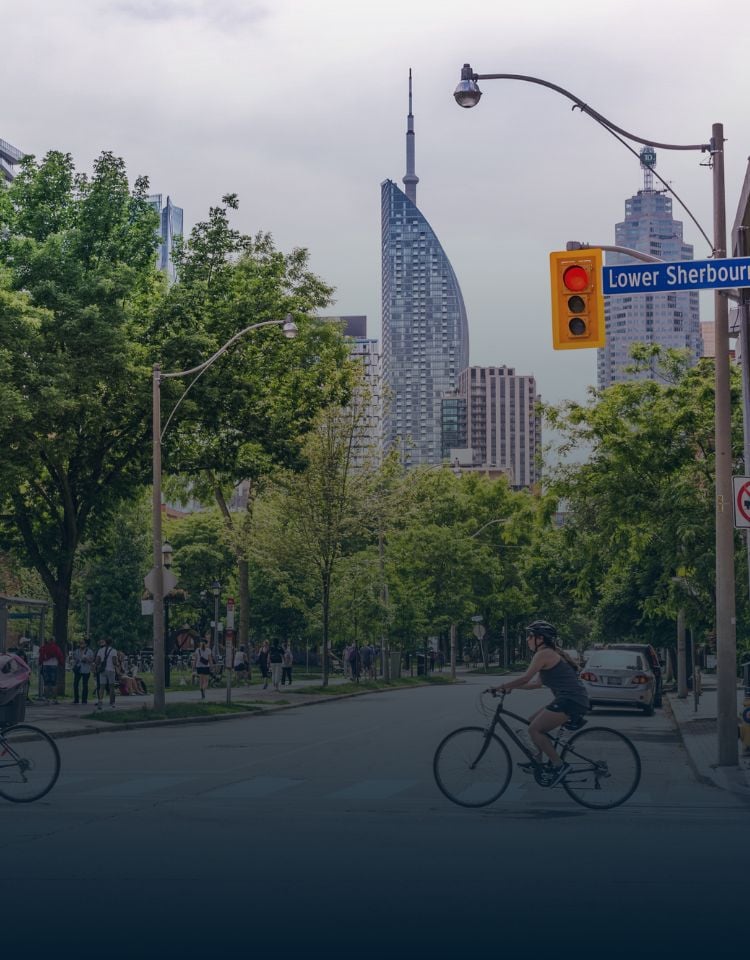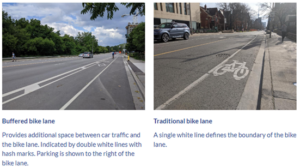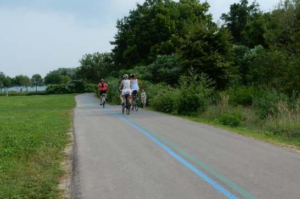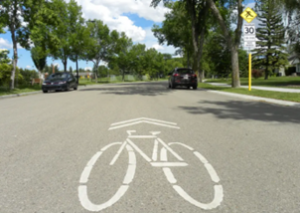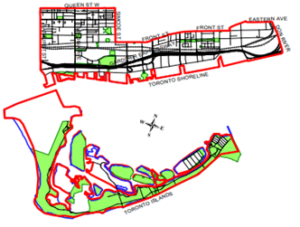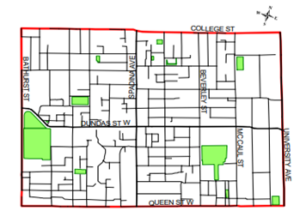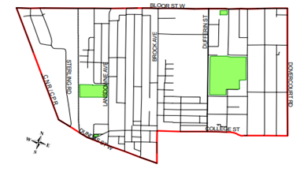Written By: William Harding and Jamie Davison, Summer Student
In response to the pandemic cycling boom, Toronto’s City Council approved the installation of 25km of temporary bike lanes. A recent Toronto Metropolitan University study revealed that the installation of bike lanes in various neighbourhoods in Toronto has doubled the number of cyclists. With more cycling comes an increased risk of collisions. As described in our previous blog, “Are Cyclists Safe in Toronto?”, cycling collisions are most commonly caused by driver inattention, excessive speed, illegal and unsafe turns, doorings, a lack of safe cycling infrastructure, debris, and general disrepair of roads. According to Toronto Police Service data, there were 218 cycling collisions between 2016 and 2020 that resulted in serious injury or fatality. One way that cyclists can take their safety into their own hands is to avoid the roads that are known to be especially dangerous for cycling. It’s important to know the roads and areas to avoid in our city as well as the red and green flags to look out for when planning your next cycling route.
Cycling in Toronto
Cycle TO has broken down Toronto’s cycling network into four categories of infrastructure ordered from most to least safe:
1. Protected Bike Lanes
Protected bike lanes are lanes that are separated by either a curb, post, or combination of the two that are dedicated to cyclists and run parallel to motorized vehicle traffic.
2. Painted Bike Lanes
Painted bike lanes are likely what you associate with cycling infrastructure as they are the most common type in Toronto. As the name suggests, painted bike lanes are lanes that run parallel to motor vehicle traffic indicated by a solid white line and a white bike symbol painted on the road. A dashed white line indicates where a vehicle can enter the bike lane to turn at an intersection.
3. Multi-Use Paths are off-road paths and trails.
Photo from the Toronto Transportation Services Parks, Forestry & Recreation
4. Sharrows are not technically cycling infrastructure. Rather, a sharrow is a bike symbol painted on the road within the motor vehicle traffic lane with two forward-pointing chevrons to indicate direction of travel. The intent is to legitimize the presence of bicycles on the road; however, they offer no distinct lane or protection.
Most Dangerous Roads for Cyclists
According to Toronto Police Service data, between 2006 and 2020, the areas in which the most cycling collisions occurred were the following neighbourhoods:
The Waterfront Communities-Island:
- 40 cycling collisions
- Be cautious at the intersection of Lakeshore Boulevard East and Carlaw Avenue as this intersection was found to be the most dangerous in Toronto.
- Be aware that there are no bike lanes at Bathurst St. and Lake Shore Blvd. W.
Kensington-Chinatown:
- 23 cycling collisions
- Avoid Dundas St. W between Bathurst and Spadina which lack any cycling infrastructure.
Dufferin Grove:
- 21 cycling collisions.
- Be cautious on Bloor St W. between Dovercourt Rd and Symington Ave, where the bike lane abruptly stops and starts again.
- Avoid the intersection of College St. and Lansdowne Ave. where Lansdowne Ave. lacks any cycling infrastructure, and the bike lane abruptly stops at College St.
Overall Cautions
What these areas have in common is that they are all high-traffic commuter areas with several busy roads lacking cycling infrastructure.
In response to these dangers, Toronto City Council approved the 2022-2024 Near-Term Implementation Program proposing 100km worth of Bikeway Installations to be completed by 2024. In addition to government action, Uber has also taken steps to protect cyclists. In 2019, Uber installed a feature to alert passengers to the presence of bike lanes at their drop-off points with a notification that reads: “A helpful reminder: Look over your shoulder for people on bikes before opening the door.”. The intention behind this feature, and a similar one implemented by Lyft in April 2019, is to prevent dooring incidents.
While new cycling infrastructure is urgently needed, the depreciation of our existing cycling infrastructure remains a concern. In Now Toronto, principal partner at McLeish Orlando, Patrick Brown said that “the state of disrepair in a bike lane is different than a car lane”, a pothole or damaged roadway can mean life-altering injuries for a cyclist. The article, published in 2019, listed Toronto’s 10 worst bike lanes due to continual construction or disrepair:
- Shaw St. between Bloor and Dupont
- Bloor St. between Bathurst and Spadina
- Adelaide between York and Victoria and at Duncan Street
- Richmond between Spadina and Bathurst
- Shuter Street
- The Martin Goodman Trail between Bathurst and Lower Sherbourne
- The north side of College, east of Bathurst
- Greenwood just past the TTC yard
- Davenport between Dupont and Bay
- Gerrard between Sherbourne and Parliament
Planning your next route
Until Toronto builds many more kilometers of bike infrastructure, cyclists will need to share the road with automobiles. When planning your next cycling route be proactive and consider these red and green flags.
| RED FLAG | GREEN FLAG |
| Sharrows: any major roads without bike lanes are potentially very dangerous as you are required to share the road with motor vehicles without any form of barrier or protection. | Cycle Tracks: these are “protected bike lanes”. These lanes with a physical separation between cyclists are considered the safest infrastructure for cyclists at this time. These barriers have even been able to stop out of control vehicles. |
| Roads with bikeways inside of the parking lane: these present the potential for dooring incidents. | Multi-use trails: these are scenic, quiet, safe, and easy for beginner cyclists. |
| Inconsistent bike infrastructure: it can be extremely dangerous if the road on which you are planning to travel has portions where bike lanes start and stop. Take a look at the live Toronto Cycling Map to make sure you will have a consistently safe path. | Newly completed bike paths: a newly completed path is likely to be in better shape than those that were installed decades ago. Check this report of newly completed bikeways as of 2021 to see if you can prioritize any of the newly installed paths. |
How can MO help?
At McLeish Orlando, we have over two decades of experience representing clients involved in complex cycling crash incidents in some of the worst intersections in the GTA. In 2015, a Peterborough resident was travelling on his bicycle when suddenly and without warning another individual opened the door of their parked car into the path of the cyclist. While swerving to avoid being doored, the cyclist was then struck by a second vehicle travelling down the same street. The cyclist sustained severe, painful, and permanent injuries. He reached out to our office, and our experienced team helped navigate the legal process, ensuring that he received the care and compensation to which he was entitled.
A cycling crash can be a traumatizing and life-changing event. If you or a loved one has been involved in a cycling collision, it is important to speak to a personal injury lawyer as soon as possible. Call our office today for a free consultation with one of our experienced bike crash lawyers to discuss next steps.


